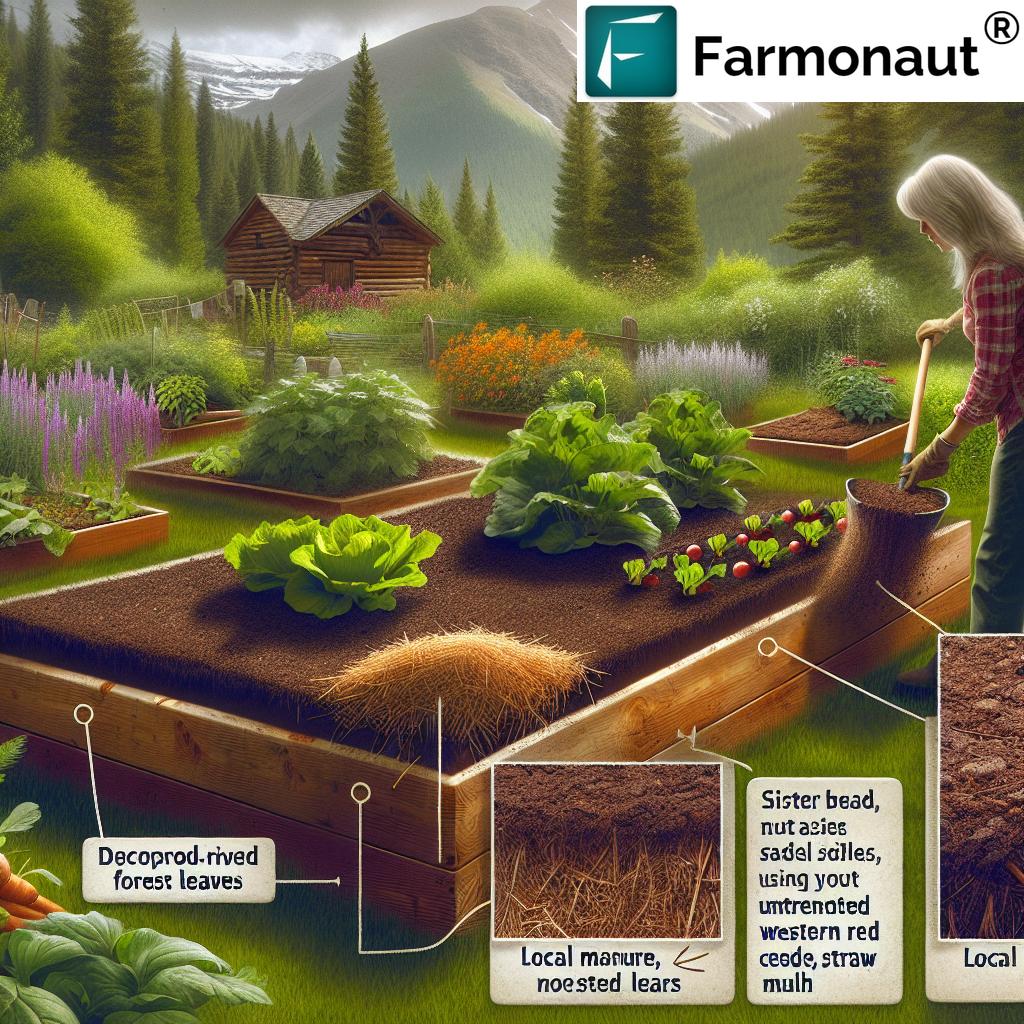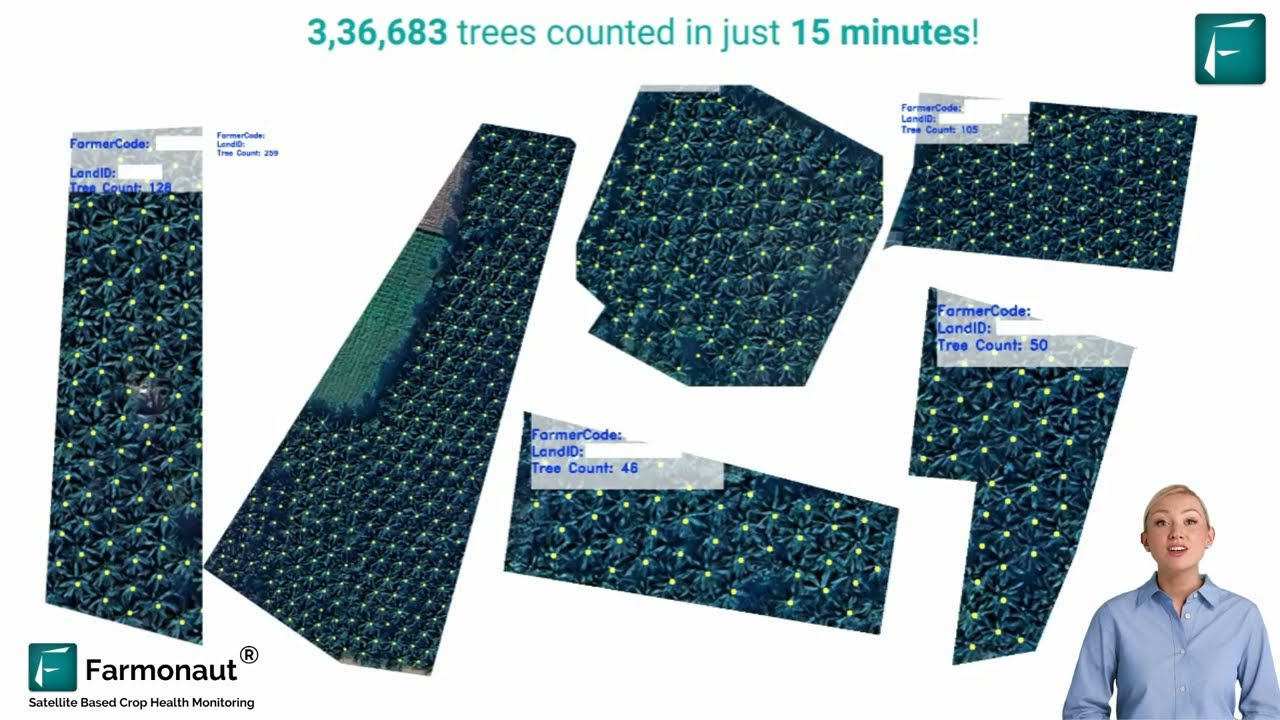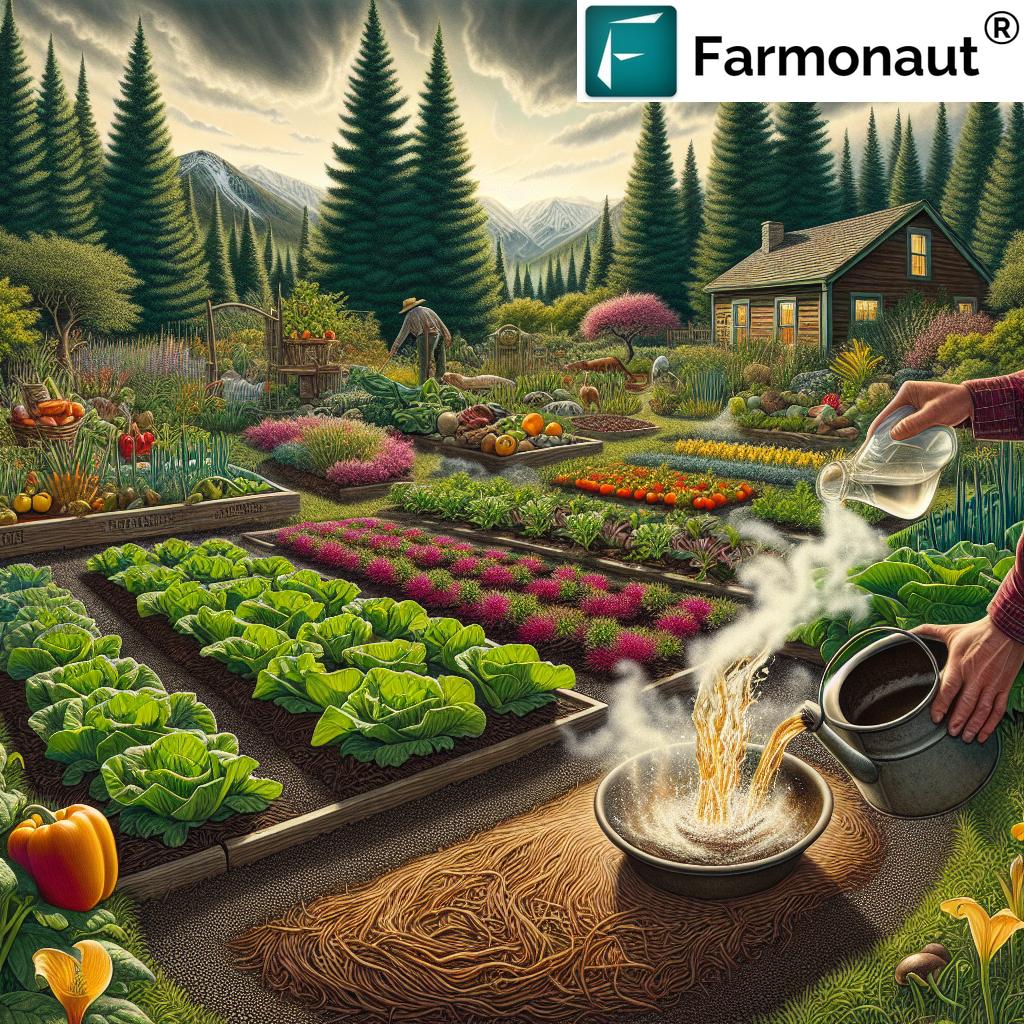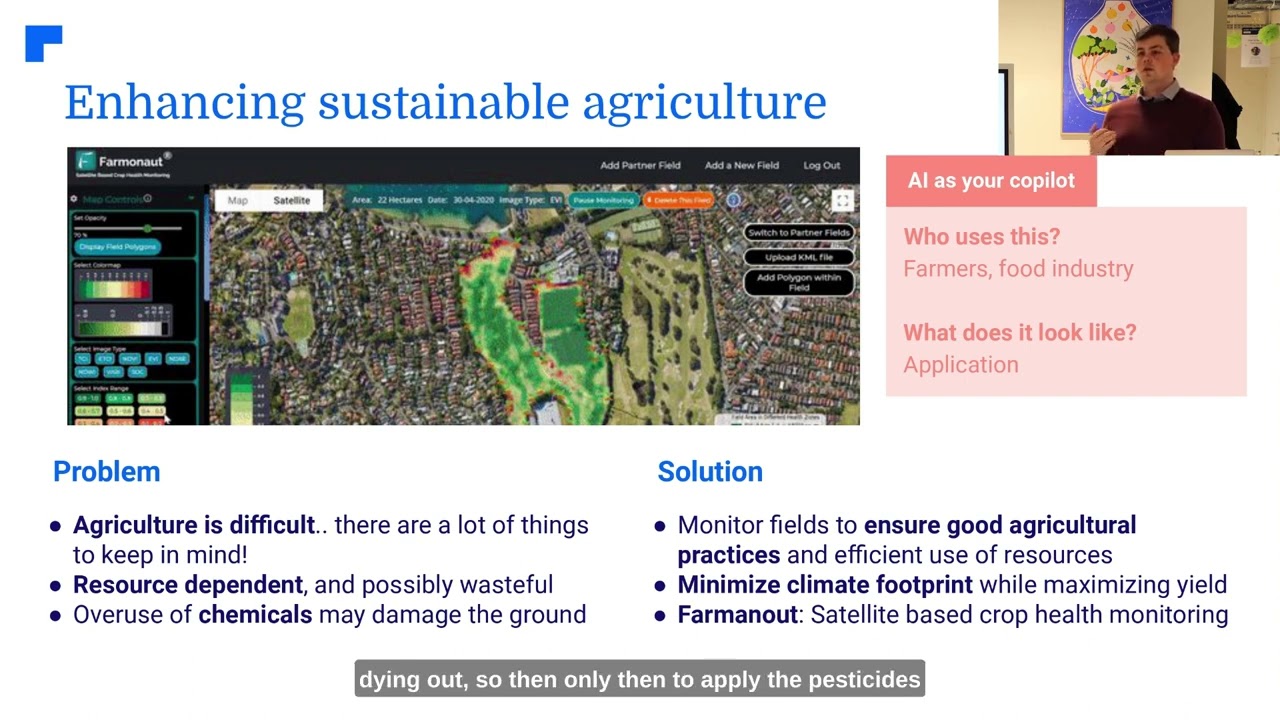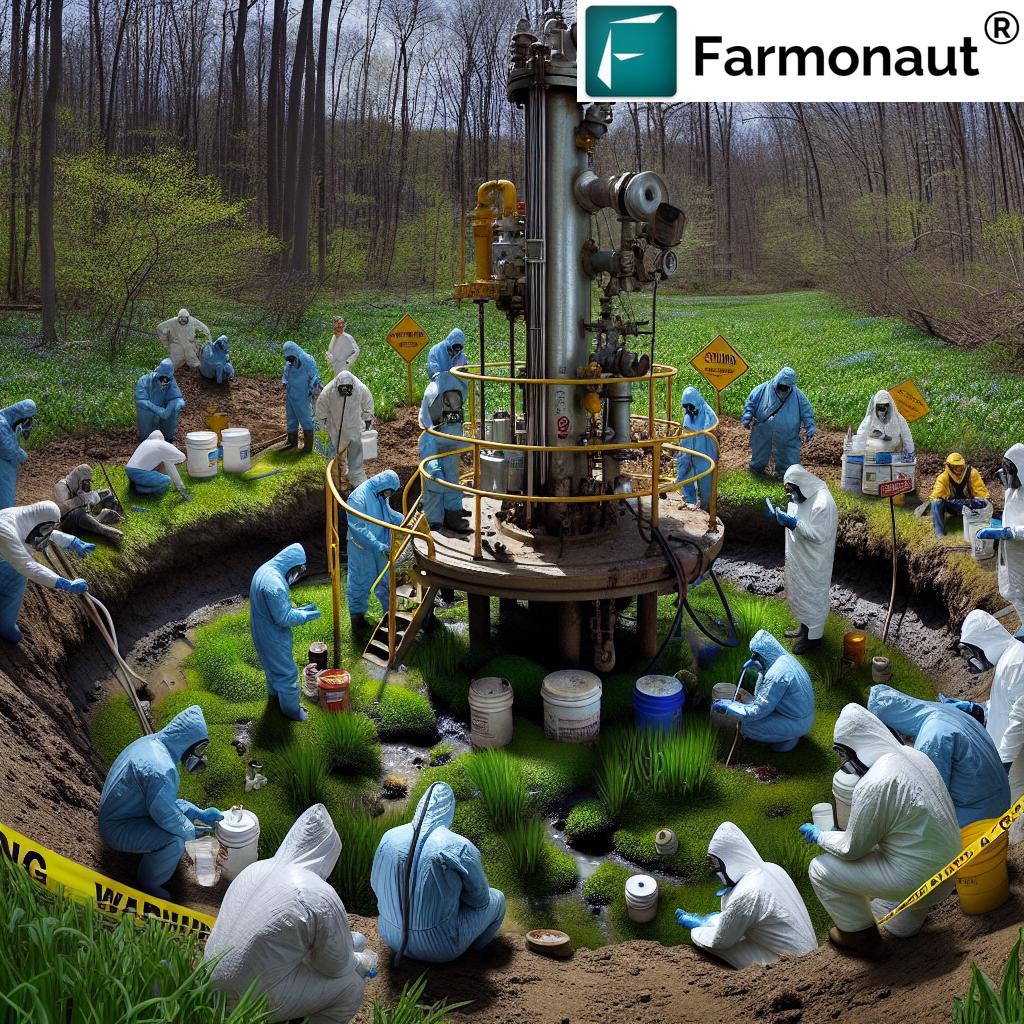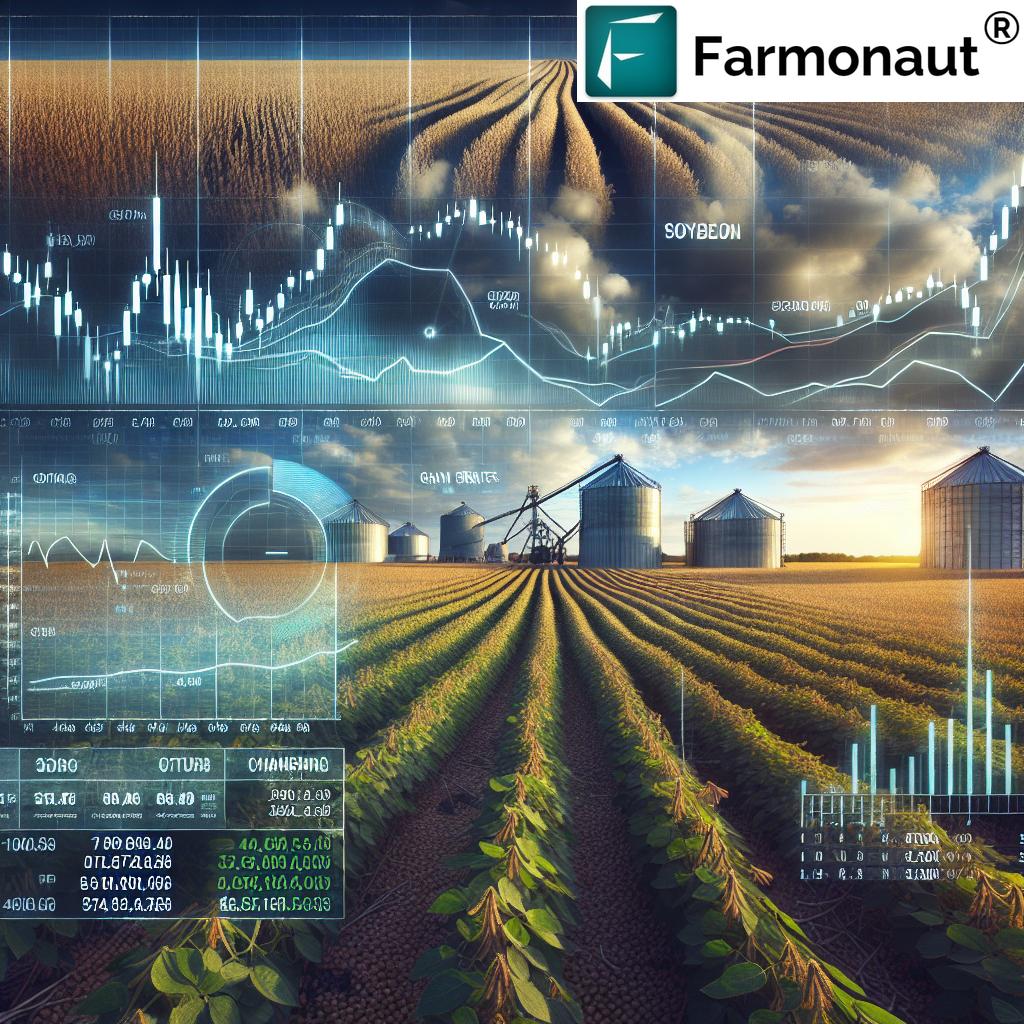Create Powerful Montana Garden Soil: 7 Eco-Friendly Tips to Grow Food
Table of Contents
- Introduction: Building Eco-Friendly Montana Garden Soil
- Trivia: The Power of Composting
- 7 Eco-Friendly Tips to Create Powerful Montana Garden Soil
- 1. How To Create Garden Soil from Native Materials
- 2. Natural Fertilizers for Home Gardens
- 3. Using Local Mulch & Organic Weed Control Methods
- 4. Water Conservation Techniques for Healthy Home Gardening
- 5. Attracting Beneficial Insects & Preventing Pests Naturally
- 6. Crop Rotation & Companion Planting Using Native Montana Wisdom
- 7. Monitoring Soil Health and Achieving Sustainability
- Eco-Friendly Garden Soil Ingredients & Tips Comparison Table
- Growing Your Own Food Benefits: Montana & Beyond
- Reducing Food Waste and Air Pollution
- How Technology Empowers Eco-Friendly Gardening: Farmonaut’s Approach
- Trivia: Native Materials Cut Fertilizer Needs
- FAQ: Eco-Friendly Montana Gardening
- Conclusion & Next Steps
Introduction: Building Eco-Friendly Montana Garden Soil
Gardening in Montana is an adventure that connects us directly with our land, our native materials, and the environment we cherish. If you’ve wondered how to create garden soil from native materials, just like the pioneers did, you’re in the right place! By learning from Montana’s forests, past journals, and sustainable gardening methods, we can grow healthy food while protecting the planet.
Recently, Montana TikToker Sarah Hamelman (@pines_and_peonies) inspired thousands by sharing her experience in creating rich garden soil using the natural wealth of her Montana home—topsoil from the forest (including western red cedar), rabbit manure, hay, and wood ash from her stove. Followers were captivated, with one exclaiming, “So beautiful!” It’s no wonder: her approach is rooted (pun intended!) in eco-friendly gardening practices that minimize chemical use, reduce waste, and foster healthy, vibrant gardens.
Today, we’ll explore seven powerful tips for creating eco-friendly Montana garden soil, leveraging native materials and natural fertilizers for home gardens. We’ll provide hands-on guidance and discuss how innovative solutions, like Farmonaut’s technology, help us garden smarter while keeping the planet healthy. Whether you want to grow your own food to save money or simply delight in the beauty and health benefits of gardening, this comprehensive guide will get you started—Montana-style!
Let’s dig in and discover sustainable soil-building, homegrown nutrition, and thriving gardens—one eco-tip at a time!
“Did you know composting kitchen scraps can reduce household waste by up to 30% while enriching your garden soil?”
7 Eco-Friendly Tips to Create Powerful Montana Garden Soil
Each tip below is packed with actionable advice and backed by both traditional and modern wisdom—plus a healthy dose of local Montana know-how. Let’s explore how to create garden soil from native materials, use natural fertilizers, and craft a sustainable gardening ecosystem right in your backyard.
1. How to Create Garden Soil from Native Materials
The heart of healthy Montana gardens is fertile, living soil—made from the natural materials right in our local forest and land. By harnessing these native ingredients, we create an environment that mimics what makes our surrounding trees so lush and resistant to disease.
- Forest Topsoil: Where trees grow, the soil thrives! Collect the top few inches of soil from nearby forested areas—focus on spots beneath western red cedar and established groves.
- Leaf Litter & Pine Needles: Mulched and partially decomposed, this layer provides organic matter and diverse nutrients. Spread a thin layer over beds or mix directly into your garden soil for an added boost.
- Wood Ash (from stoves): Use sparingly—wood ash adds potassium and raises pH. Ensure ash is cool, chemical-free, and spread lightly over beds.
- Native Hay: Adds structure and aids water retention. Allow it to compost partially before incorporating for best results.
- Compost: Use home compost created from food scraps and garden clippings. This powerful method “closes the loop” and minimizes household and food waste. (Pro tip: Composting can reduce your waste by up to 30%!)
By mixing these ingredients, we’re literally growing our gardens from the land beneath our feet—just as the pioneers did, guided by the wisdom found in their journals.
Native Garden Soil Preparation: Step-by-Step
- Choose a Garden Bed Location: Wherever you see thriving trees, native grasses, or wildflowers, that’s a great sign of healthy local soil.
- Layer Ingredients: Start with a base of forest topsoil, mix in compost, add a layer of hay, sprinkle wood ash, and top with leaf litter.
- Water Thoroughly: Ensure all materials are well-moistened, encouraging healthy microbial activity.
- Let Nature Work: Wait 2–4 weeks (if possible) for “cooking”—nature’s way of making potent, living soil!
This approach minimizes the need for chemical fertilizers and leverages the ecology of the area to our advantage—keeping both plant roots and the environment in perfect balance.
Tip: Don’t take too much forest soil from one spot. Rotate collection areas and refill holes with excess garden soil to protect the ecosystem.
2. Natural Fertilizers for Home Gardens
How do we keep our Montana food gardens nourished naturally? By supplementing soil with clean, local, and renewable fertilizers:
- Rabbit Manure: A “cold” manure—safe to use fresh without burning plants. High nitrogen. Simply scatter, mix, or brew into “manure tea.”
- Chicken/Poultry Litter: Best composted first; adds N-P-K and traces of calcium.
- Composted Cow/Sheep Manure: Available from local ranches—balance with carbon materials (e.g., straw, leaves).
- Wood Ash: As already noted—adds potassium and trace minerals (never source from pressure-treated/painted wood, only clean stove ash).
- Alfalfa Meal: High in nitrogen, stimulates beneficial soil microbes, and is often available locally.
- Biochar: Charred plant material enhances water/nutrient retention, supports healthy soil microbiology, and locks up carbon to reduce warming impact on the planet.
All these natural fertilizers for home gardens avoid toxic runoff, reduce our reliance on chemical inputs, and create thriving, resilient plant communities.
DIY Natural Fertilizer Recipe
- Combine two parts rabbit manure, one part compost, and a sprinkle of wood ash in a bucket.
- Add water to moisten, then let sit for 24–48 hours (stir occasionally).
- Strain out solids and use the “tea” to water your plants. Scatter remaining solids around fruit trees and garden beds.
Result: You’ll boost vegetable/flower growth while cutting costs and keeping your Montana home garden toxic-free.
3. Using Local Mulch & Organic Weed Control Methods
Managing weeds is essential for healthy home gardening, but chemical weed killers damage local soil health and may pollute air and water. Here’s how to use organic weed control methods in Montana:
- Hay & Straw Mulch: Spread a thick layer over new plantings and paths to prevent light from reaching weed seeds, keeping your flower beds and food gardens clear, moist, and cool.
- Leaf Litter: Natural mulch sourced from your surrounding land. Supplies nutrients as it breaks down and enhances moisture retention.
- Cardboard Layering: Place cardboard beneath mulch to smother persistent weeds—just remove tape/staples first.
- Killing Weeds with Boiling Water: Pour boiling water directly on weeds in cracks or between garden rows. Safe, simple, and chemical-free.
Through these eco-friendly gardening practices, we avoid introducing toxins, eliminate chemical weed killers, and maintain a safer space for pets, pollinators, and kids!
Mulch and Weed Control: Why It Matters
- Prevent Weeds: Mulching can reduce weed growth by up to 80%, saving labor time and ensuring better moisture for crops.
- Reduce Watering: A mulch layer prevents evaporation, conserving water—especially crucial in Montana’s dry spells.
- Cost Savings: Homemade mulch and using boiling water offer free, sustainable alternatives to chemical solutions.
Pro tip: Rotate types of mulch based on what is most available on your land—hay in summer, leaf litter in fall, evergreen needles in winter.
4. Water Conservation Techniques for Healthy Home Gardening
Water is a precious resource in Montana. Our sustainable gardening efforts should focus on maximizing every drop for plant health while reducing runoff and waste.
- Soaker Hoses & Drip Irrigation: Deliver water directly to roots, minimizing evaporation and preventing fungal issues.
- Mulching: As discussed, mulch holds moisture and shelters soil life.
- Collecting Rainwater: Set up barrels to gather water from roofs and outbuildings. Use stored water for irrigation during dry periods.
- Garden Bed Design: Shape beds into gentle swales or berms to capture rain, reduce runoff, and let water soak in.
- Plant at the Right Time: Water in early morning/late evening to minimize evaporation and stress on plants.
With these methods, we support plant roots deeply, sustain the local ecosystem, and reduce strain on our wells and municipal reserves.
“Using native materials for garden soil can cut fertilizer needs by 50%, making your garden more sustainable and eco-friendly!”
5. Attracting Beneficial Insects & Preventing Pests Naturally
Chemical pesticides are not our allies! Instead, strengthen the natural balance of the area by:
- Growing Native Flowers: Attract pollinators and beneficial larvae (like ladybugs and lacewings) which control aphids and caterpillars naturally.
- Encouraging Birds: Place birdbaths, feeders, and perches to welcome pest-eating birds that help prevent the spread of disease in your garden.
- Interplanting: Grow onions, garlic, and herbs alongside vegetables to repel aphids, beetles, and rabbits.
- Maintain Healthy Soil: A strong, diverse soil web suppresses soil-borne pests and can make plants more resilient to damage.
By supporting the ecology of the area, we avoid needing toxic sprays. Over time, this reduces our labor and keeps our gardens safer for all.
6. Crop Rotation & Companion Planting Using Native Montana Wisdom
Why not use what nature teaches? Here’s how we follow pioneer gardening wisdom for bountiful results:
- Crop Rotation: Switch up where you plant veggies across years—pioneers noted in their journals that rotating beds prevents nutrient depletion and reduces pest/disease build-up.
- Companion Planting: Mimic the diversity in Montana forests. Blend deep rooters with shallow-rooted crops, and mix flowers with vegetables for resilience.
- e.g., Plant beans (nitrogen fixers) with corn, or tomatoes with basil and marigold to boost food production and deter pests.
Crop rotation and companion planting also reduce soil-borne disease and can boost yields by up to 20%.
7. Monitoring Soil Health and Achieving Sustainability
Our journey doesn’t end after mixing soil! Continual observation and gentle adjustments yield the best results.
- Track Progress: Monitor plant color, vigor, and crop health weekly. Adjust compost/mulch/fertilizer as needed.
- Soil Testing: DIY kits (or University of Montana services) help identify pH, N-P-K, and organic matter content.
- Add as Needed: Top up beds with new compost, mulch, and native materials at least twice each season.
- Record Keeping: Use a garden journal to track what you add, seasonal weather, plant successes, and ideal local practices for your microclimate.
- Leverage Technology: Tools like the Farmonaut App provide satellite imagery and real-time crop health insights for more informed, eco-friendly management—even at the home garden scale!
Want to monitor the environmental footprint of your garden or farm? Farmonaut’s Carbon Footprinting empowers you to track and reduce your own carbon emissions while supporting sustainable agriculture.
Curious about where your food comes from? Discover Farmonaut’s Blockchain-Based Product Traceability—see every step from field to table, increasing safety and trust!
Grow trees or manage larger cultivated spaces? Farmonaut’s Crop Plantation & Forest Advisory combines local wisdom with AI-driven, satellite-based precision for scale and sustainability.
Develop your own tool or website with satellite weather/crop data? See the open API and browse the detailed API Developer Docs.
Eco-Friendly Garden Soil Ingredients & Tips Comparison Table
| Ingredient/Practice | Eco-Benefit | Estimated Plant Growth Improvement (%) | Application Frequency | Time to See Results | Potential Waste Reduced (%) |
|---|---|---|---|---|---|
| Compost (food scraps & garden waste) | Reduces landfill waste; increases organic matter; boosts nutrient cycling | 15-25% | 2-3 times/year | 2-4 weeks | Up to 30% |
| Forest Topsoil (w/ leaf litter) | Mimics natural ecosystems; increases microbial diversity | 20-35% | Once/new bed or as needed | 1-2 weeks | N/A |
| Rabbit Manure | Local renewable resource; high N, safe fresh | 10-20% | Monthly or as crops demand | 1-2 weeks | N/A |
| Wood Ash (from clean wood stove) | Adds potassium, raises pH, closes the nutrient loop | 5-10% | Sparingly; 1-2x/season | Immediate-2 weeks | N/A |
| Hay Mulch | Suppresses weeds, conserves water, adds organic matter | 10-15% | Each planting/2 months | Next growth cycle | 5-10% |
| Boiling Water for Weed Control | No chemicals; zero toxin runoff; instant effect | – | As weeds appear | Immediate | N/A |
| Rainwater Harvesting | Reduces strain on municipal supply and energy; promotes local water balance | 5-10% | Continuous | Immediate | Up to 10% |
| Native Flower Border | Attracts beneficial insects; reduces chemical pesticide need | 10% | Each spring | 4-6 weeks | N/A |
Growing Your Own Food Benefits: Montana & Beyond
- Reduce Food Waste: Harvest what we need, when we need it! Less spoilage means less waste ends up landfills.
- Cut Air Pollution: Shorter transportation routes (from our garden to our kitchen) drastically reduce emissions from trucks, trains, and planes used in grocery supply chains, directly minimizing pollution and warming.
- Save Money by Growing Food at Home: Seeds and natural soil amendments are vastly less expensive than store-bought produce, especially if you compost. Over a season, a backyard garden can offset hundreds of dollars in grocery bills.
- Improve Diet & Health: Studies show gardening boosts physical activity, gives us fresh fiber-rich vegetables and fruits, and fosters a deeper connection to what we eat.
- Mental Health: Time in the garden reduces stress, increases happiness, and sharpens focus. There’s a reason scientists call it “horticultural therapy!”
- Educational Value: Home gardening helps us (and our children) better understand natural cycles, sustainability, and food production.
There are countless more reasons, but growing food ourselves truly transforms our Montana homes and the world around us.
Reducing Food Waste and Air Pollution: The Power of Native Local Gardens
By using native materials for soil, natural fertilizers, and reducing food miles, our gardens become engines of sustainability:
- Composting and consuming homegrown produce slashes food waste—much of which would otherwise rot in landfills and emit methane, one of the most potent pollutants impacting global warming.
- Local food uses far less gasoline and refrigeration than store-bought—shrinking our environmental “footprint.”
- Eco-friendly gardening avoids chemicals that can enter Montana’s rivers, lakes, and air, further reducing pollution and protecting wildlife.
In Montana (and beyond), when we focus on native garden soil preparation and organic growing practices, we make lasting, positive changes for soil, air, water—and our communities.
How Technology Empowers Eco-Friendly Gardening: Farmonaut’s Approach
While traditional methods are the backbone of a healthy garden, leveraging innovative technology can make sustainable gardening smarter and more effective—even for home growers.
- Real-Time Soil & Crop Health Monitoring: Farmonaut’s satellite-based platform enables anyone—from large farms to passionate home gardeners—to monitor vegetation health (NDVI), soil moisture, and key growth metrics. Making informed irrigation, fertilizer, and pest management decisions has never been easier.
- AI Advisory System: Jeevn AI, Farmonaut’s intelligent advisory tool, provides real-time, customized gardening guidance based on current weather, crop needs, and soil data.
- Blockchain Traceability: Want to know every step of your food’s journey? Blockchain makes supply chain transparent, from garden bed to consumption, boosting trust and food safety for everyone.
- Carbon Footprint Tracking: Keep tabs on your garden’s environmental impact (and improvement!) with Farmonaut’s Carbon Footprinting Tool, perfect for eco-conscious growers.
- Fleet & Resource Management: For larger properties, Farmonaut offers tools to optimize vehicle use, reduce operational costs, and maximize efficiency—helping you manage operations sustainably at scale.
- Flexible Access: Farmonaut’s solutions are offered via Android, iOS, and Web App for easy, on-the-go management.
- API Integration: Tech-savvy gardeners and agri-entrepreneurs can build their own smart tools with the Farmonaut API and access the full Developer Docs.
From backyard food beds in Bozeman to commercial farms in the Rockies, Farmonaut is bringing environmental responsibility, precision, and transparency to modern gardening and agriculture.
Ready to explore more? See Farmonaut’s Admin Platform for Large-Scale Management here.
FAQ: Eco-Friendly Montana Gardening
What native materials are best for making rich Montana garden soil?
Forest topsoil, leaf litter, pine needles, rabbit or livestock manure, locally sourced hay, and composted food scraps. These maintain natural nutrient cycles and suit Montana’s unique environment.
How do I avoid using chemical fertilizers and pesticides in my home garden?
Rely on natural fertilizers (manure, compost), mulch heavily, attract beneficial insects, and use boiling water or cardboard as organic weed control methods.
Can these eco-friendly practices save me money in the long run?
Absolutely. By using what’s already on your land, you reduce purchasing fertilizers and weed killers – and save on grocery bills by growing your own food.
What’s the best way to reduce air pollution and waste through gardening?
Grow food locally to cut transport emissions, compost food waste, avoid chemicals, and choose mulch over plastic weed barriers.
Is it safe to use wood ash and manure from home sources?
Yes, when using wood ash from untreated, chemical-free wood and manure from healthy, well-fed animals. Apply sparingly and balance pH with composted materials.
How can I measure my garden’s environmental impact?
Leverage tools such as Farmonaut’s Carbon Footprinting Service or keep a journal tracking your resource use, waste reduction, and input sources.
Conclusion & Next Steps
Creating powerful Montana garden soil with native materials is far more than growing food—it’s about healing our environment, nourishing our families, and treading lightly on the planet. Through natural fertilizers, eco-friendly gardening practices, and the wisdom of both pioneers and modern tech, we truly can minimize waste, improve our health, and generate cost savings season after season.
Let’s make the shift to sustainable home gardening, inspire our neighbors, and lead Montana—one bed, one season, and one healthy harvest at a time.





